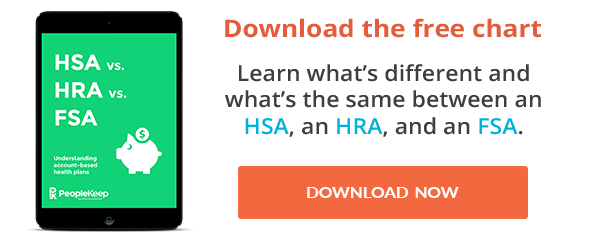stand-alone health reimbursement arrangements (HRAs) can be a bit confusing. And if you own a small business, you might be wondering what they are and how they work. So I reduced stand-alone HRAs, more specifically for a person stand-alone HRAs, a comprehensive understanding of how stand-alone HRAs work in 2015 and beyond.
Important Note: Before it is important to note start, only established that, generally speaking, stand-alone HRAs  are a compliant plan if they for one participant (a "one-person-HRA"). That's because health care reform to change how employers can use stand-alone HRAs, if there are two or more participants. ". Market reforms" These health care reform changes are often referred to in this article we focus on stand-alone HRAs who have a plan participant
are a compliant plan if they for one participant (a "one-person-HRA"). That's because health care reform to change how employers can use stand-alone HRAs, if there are two or more participants. ". Market reforms" These health care reform changes are often referred to in this article we focus on stand-alone HRAs who have a plan participant
Starting with the basics -. One- person stand-alone HRA definition
First, a stand-alone HRA is is benefiting one type of health care, the tax-free for reimbursement allowed by out-of-pocket medical expenses, including personal health insurance premiums. Stand-alone HRAs are funded 100% by the employer, tax deductible for the employer and tax-free to the employee
A one-person stand-alone HRA is just that - a . stand-alone HRA with a subscriber. are one-person stand-alone HRAs popular with C-Corp owners, a I-non-profit and churches and entrepreneurs.
History of HRAs
as already mentioned, the health reform changes as may be used stand-alone HRAs. However, before 1 January 2014 HRAs were not so limited
In the 1960s -. 190s reimbursement gained popularity as a health insurance increased deductibles. During this period, the employer Employees began to reimburse for certain medical expenses not covered by their health care plans. However, there was some confusion as to what could and could not be repaid.
In 02, the IRS formally confirmed HRAs defines what could and could not be refunded. From 02 to 2014 HRAs were widely adopted both as complementary and stand-alone health benefits.
Then, in 2010, when the health reform was adopted, one of the big questions was how HRAs were affected by the new regulations for group health plans. Finally, an HRA is technically a group health plan. In 2013, the Department of Labor announced that the stand-alone HRAs (with more than 2 participants) with the annual limit rules (PHS 2711) would have to fulfill. As such, the availability of a stand-alone HRAs was limited after 2014 for most companies. However, because the new regulations apply to HRAs only with two or more plan participants, stand-alone HRAs are compatible health benefits if they set up only for a subscriber.
To learn more about one-person stand-alone HRAs and the rules here.
As a one-person stand-alone HRA Works
So, how is a one-person stand-alone HRA work? It's easy. An entrepreneur decides:
-
are which categories of medical expenses they report (ex: out-of-pocket medical expenses and personal bonuses)
-
How much on a monthly or annual basis awarded (eg: $ 0 / month or $ 2,400 per year)
-
What with unused funds at the end of the plan year
Then, a business will generally works set up with a third-party administrator for the required HRA will happen to manage planning documents and, the plan in a compliant manner.
alternatives to one-person stand-alone HRAs
If your small business will offer an HRA-like health benefits to more than a participant, then an alternative to a stand-alone HRA is Healthcare reimbursement plan (HRP) .
HRPs are an employer-sponsored and tax advantaged employer health benefit plan. With them, you can reimburse your employees for individual health insurance premiums and new requirements of health reform einwillig
HRPs have many of the same advantages of HRAs for small businesses -. They are offering affordable, predictable costs and allow for tax-free reimbursement of individual health insurance premiums. HRPs but are designed to correspond with the new market reforms and a compliant solution, if you want to offer benefits for more than one participant.
Conclusion
Now you've got a handle on what is a one-person stand-alone HRA, along with a great alternative for your small business. Here's what you need to remember:
-
A stand-alone HRA compliant so long as the plan has only one participant
[1945019[ -
stand-alone HRAs, from 1 January 2014 are no longer conforms generally, if the plan has two or more participants
-
Healthcare reimbursement plans (HRP) are an alternative to HRAs
What other questions do you have about stand-alone HRAs? Comment below and we would be pleased to answer your questions!


0 Komentar